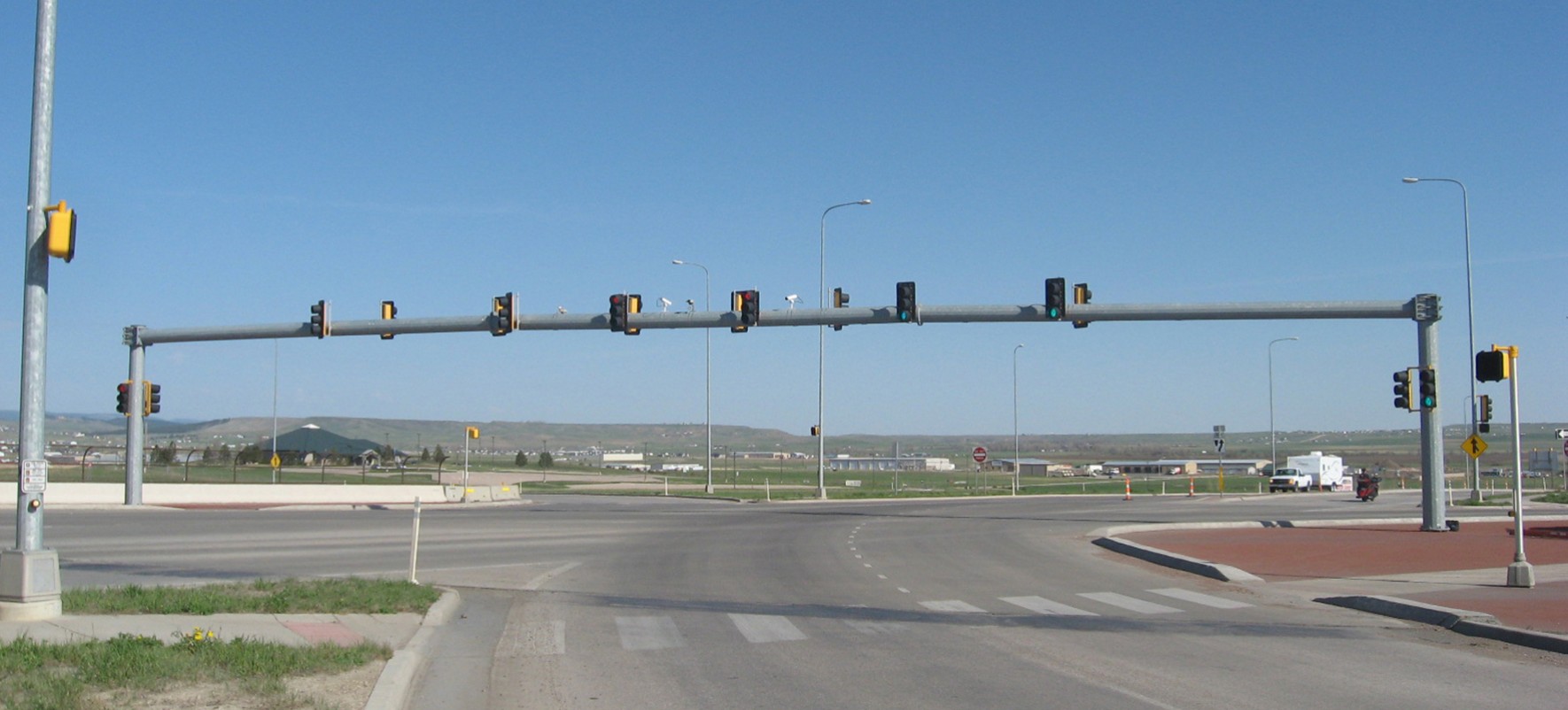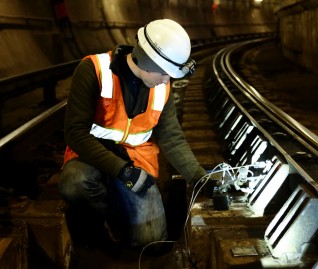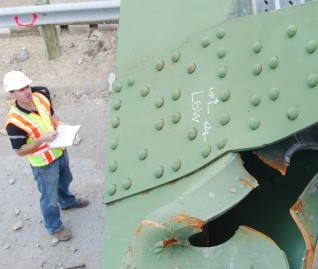WJE PROJECTS
South Dakota Department of Transportation


CLIENT |
South Dakota Department of Transportation |
LOCATION |
Rapid City Region, SD |
Inventory Inspection of Lighting and Signal Poles
The South Dakota Department of Transportation retained WJE to provide a complete inventory inspection of all light and signal poles located in the Rapid City Region. This population consists of about 2,500 structures along State Highways in the western portion of the state. All inspection work had to be completed within seven months of notice to proceed.
BACKGROUND
Typical overhead light poles along South Dakota State Highways are 30 feet to 50 feet tall and are constructed of weathering steel, painted steel, galvanized steel, or wood. Shorter steel or aluminum poles are used to support decorative light poles in areas with significant pedestrian traffic. The metal light pole structures are typically fastened to their foundations using a minimum of four anchor bolts in conjunction with a variety of break-away devices used to protect traffic during impact. Wood poles are directly buried. Signal poles are constructed of either galvanized or weathering steel and typically have mast-arms that range in length from 30 feet to 65 feet.
SOLUTION
WJE engineers performed a visual inspection of each light and signal pole, which included a hands-on inspection of any pole-to-base plate welds, hand hole welds, break-away devices, anchor hardware, and the exposed portion of the foundation. The upper portion of each light pole and the lighting head assembly were visually inspected using binoculars. All signal pole mast arm connections were accessed using rope access techniques and/or a ladder and were visually inspected within arms-length. These access techniques served the travelling public by almost eliminating the need for traffic control. All cracks observed in steel structures were confirmed using magnetic particle inspection equipment. Accessible loose hardware was tightened.
In order to increase inspection and reporting efficiency, WJE developed tablet-based computer software to permit direct entry of all inventory and inspection data for each subject structure. The software was used to populate a database, which was backed-up in the cloud to prevent data loss in the case of equipment failure. This system allowed for simple transmission of inspection data to the client and eliminated the need for office staff to enter data from field notes. In addition, the project manager was able to use the software to track progress and inspection information on a dedicated website in real time.
RELATED INFORMATION
-
 We engage a full suite of state-of-the-art instrumentation and monitoring capabilities to test... MORE >Services | Instrumentation and Monitoring
We engage a full suite of state-of-the-art instrumentation and monitoring capabilities to test... MORE >Services | Instrumentation and Monitoring -
 We collaborate with all project stakeholders throughout the design process to ensure the proper... MORE >Services | Systems and Components
We collaborate with all project stakeholders throughout the design process to ensure the proper... MORE >Services | Systems and Components -
 When the integrity or condition of a structure is in question, clients rely on us for answers MORE >Services | Structural Engineering
When the integrity or condition of a structure is in question, clients rely on us for answers MORE >Services | Structural Engineering






































